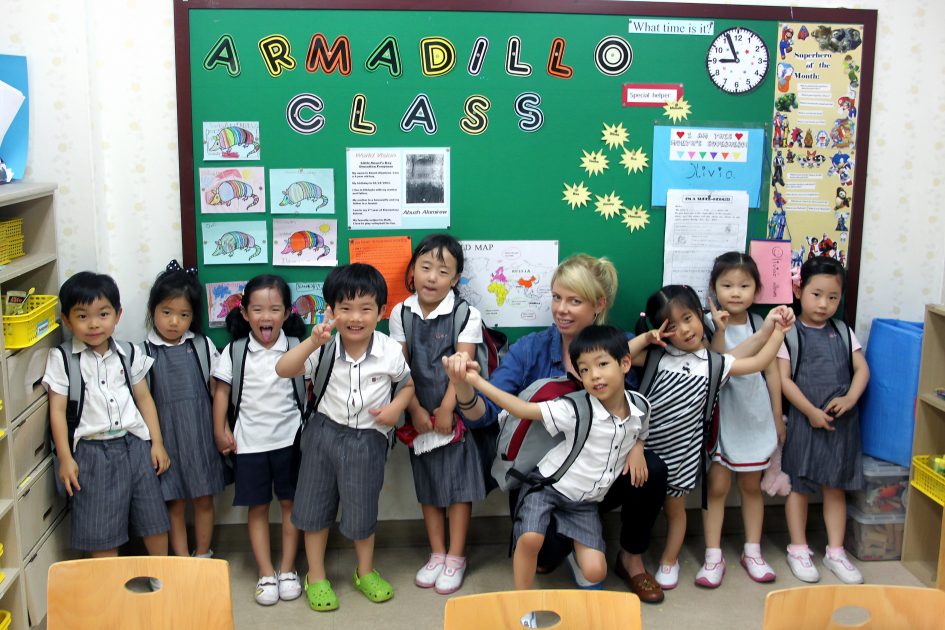
Teaching mixed-ability classes might not be something you expect to have to consider in your English as a Foreign Language class. Surely if you are teaching a Pre-Intermediate class then it’s a Pre-Intermediate class? Isn’t that why we have the Common European Framework of Reference for Languages with different levels in the first place?
Unfortunately, this is not always the case in our classrooms. Sometimes we can find that there are students who have different abilities in the same class, even though they have the same level of English.
How can you have mixed ability classes?
Firstly, you need to remember that all students are different. Some students have excellent grammatical knowledge but have had very little practice speaking, so their productive skills are lacking. Other students can talk the hind leg off a donkey, and even though they are communicative they speak with a fair amount of errors.
So in one Pre-Intermediate class, for example, you could have students who speak well and others who do grammar exercises well. Or you could have a student who has just progressed to Pre-Intermediate and another who has been in Pre-Intermediate for three months. This would account for having students with different abilities in one class.
So let’s look at effective strategies for teaching mixed ability EFL classes strategies for dealing with mixed ability classes.
1. Do a needs analysis
Of course, this is the first step for any of your EFL classes and this is a prime example of why it should be. An effective needs analysis will help you identify the strengths and weaknesses of your students and where they differ. This will allow you to plan appropriate activities for your students.
At the same time, if you discover that your students are at very different levels, this will enable you to plan appropriately for your lessons to make sure no one is bored or frustrated by the lessons being either too easy or too challenging.
Read more: How to Make a Needs Analysis Questionnaire for ESL Students
2. Mix pairs
When you group students in a mixed ability class, there are two options. You can either pair up students who have similar strengths and are of a similar level. This way, they can move at a faster pace than the other students and they will be able to bounce ideas off each other. This pairing is more suited to a freer activity, such as a speaking activity or a role-play.
Or you can pair up a weaker student with a stronger student. In this case, the stronger student will take the role of teacher and help their partner, the lower student would be challenged but assisted, and at the same time, your pairs would all work at a similar pace. In this situation, you might find your higher-level student using translation to help explain a language point to a lower level learner, and this is perfectly okay in this instance. This pairing is more suited to a controlled exercise, such as grammar exercises or quizzes.
Read more: Using Translation in the EFL Classroom

3. Use unstructured activities
If you have noticed that your students can accomplish tasks at different paces, there is no reason you should hold all your students to the same standard. Rather than giving explicit instructions, frame your activities in open-ended ways so that your students can accomplish as much as they can as fast as they can.
For example, instead of saying, Write a story of 150 words using the past simple and the present perfect, say You have ten minutes to write a story about…. This way each student will do what they can and they will finish at the same time.
For speaking activities, make use of class mingles. In a class mingle, the students move around and speak to every other student in the class. This way, the students are interacting with students who are of a similar level to them, as well as students who are stronger and weaker than them. They are free to accomplish the task with whatever means they have at their disposal.
Read more: 9 Warmers for the EFL Classroom
When you think about it, this is a very authentic exchange, as English language learners often have to communicate with other English language learners outside the classroom, and these learners could well be stronger or weaker.
4. Have extra activities up your sleeve
This works both ways.
This is one of the most effective strategies for teaching mixed ability EFL classes. You should have some activities for the stronger students you know will finish quickly. When they are finished you can give them the extra worksheets to work on while the others finish. These should be worksheets that are related to the activities just done by the students. For example, you can ask the faster students to read the text again and highlight and look up any words they might not know, or write down any new vocabulary items in their notebooks.
But you should also have activities for the weaker students. This could be a simpler version of the same task or a lower level worksheet which you can give them if you see that they are struggling. Rather than being demotivated by not being able to complete a worksheet, the lower levels students will appreciate that you are giving them extra attention.
5. Get to know your students
The underlying principle of teaching a mixed ability class is that you know your students. Getting to know your students is vital to building a rapport with your students but also to recognising and understanding the different abilities of your students. This is essential to both creating a comfortable and effective learning environment, but also to make sure you teach the lesson in the best way possible for your students.
Having a mixed ability class is a reality in the majority of EFL classrooms, so you need to be prepared to deal with this reality. Luckily, there are a number of ways you can anticipate problems relating to the differing levels of your students and so you can plan appropriately.
The post 5 Effective Strategies for Teaching Mixed Ability EFL Classes appeared first on The TEFL Academy Blog.



